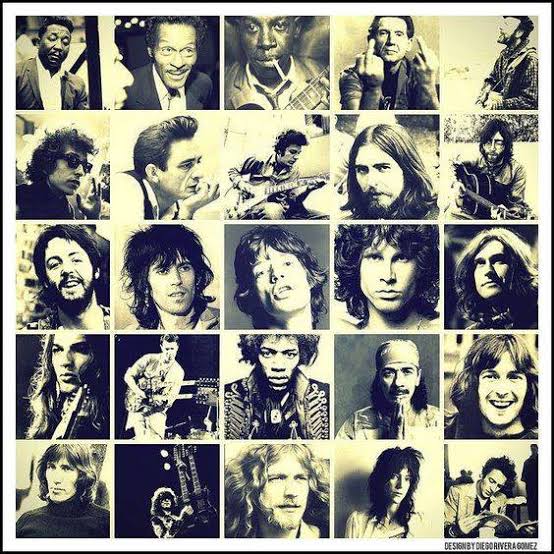
Beyond the Spotlight: What It Takes to Be a Legend in Music
In an era defined by fleeting fame and viral sensations, the concept of musical “legend” status remains a coveted and elusive summit. While many artists achieve stardom, few ascend to the rarified realm of legendary. The question then emerges: what does it truly take to become a legend in music?
Becoming a legend in music is not just about hit singles or high-profile collaborations. It is an enduring journey shaped by originality, persistence, evolution, cultural impact, and the ability to resonate across generations. It demands more than talent — it requires vision, sacrifice, and a relentless commitment to artistic authenticity.
The Foundation: Talent and Skill
The first and most apparent requirement is raw talent. Legends often show signs of musical genius early — whether it’s vocal power, instrumental mastery, songwriting brilliance, or production innovation. But talent alone is never enough. It is the refining of that talent through rigorous practice and continuous learning that sets the groundwork for greatness.
Artists like Prince, Aretha Franklin, and Freddie Mercury honed their skills obsessively. Prince reportedly played 27 instruments and had an exhaustive work ethic, while Aretha began singing gospel in her father’s church and mastered vocal control that could convey both sorrow and strength in a single note. This commitment to craft distinguishes the memorable from the mythical.
Innovation and Originality
One defining trait of musical legends is their ability to create or transform genres. Think of how Bob Dylan brought poetic lyricism into folk and rock, or how Madonna redefined pop music with her chameleonic reinvention. Innovation is what captures attention and carves an artist’s identity into the cultural consciousness.
Hip-hop legends like Tupac Shakur and The Notorious B.I.G. didn’t just perform — they narrated street realities with a poetic edge, embedding messages of pain, resistance, and survival. In doing so, they shaped a genre into a movement.
Innovation is also evident in how an artist challenges norms. David Bowie shattered gender and performance conventions. Beyoncé continually expands the boundaries of performance art and digital album releases. These artists dared to be different, and that courage to stand out helped them stand the test of time.
Authenticity and Connection
Legends forge emotional connections with their audience. This connection is not born from commercial strategy, but from authenticity. It is the ability to reflect human experiences — love, loss, joy, rebellion — through music that feels personal and yet universally relatable.
Johnny Cash’s gravelly voice carried the weight of real pain and redemption. Adele’s ballads feel like pages from a diary, capturing heartbreak in its rawest form. When music becomes a mirror to the listener’s soul, it transforms from entertainment into something sacred.
Authenticity also includes vulnerability. Legendary artists are not afraid to show their flaws and struggles. Kurt Cobain’s tortured introspection spoke volumes to a generation. Amy Winehouse’s battles were painfully apparent in her music. These expressions, though sometimes tragic, remind audiences of the shared complexity of being human.
Longevity and Evolution
To become a legend, one must endure — not just survive, but thrive through evolving musical landscapes. The music industry is brutal, and trends change overnight. Legends not only adapt but often lead the change.
Artists like Michael Jackson and Madonna continuously reinvented their sound and image to stay relevant across decades. Taylor Swift has transitioned from country ingénue to pop powerhouse to folk-influenced storyteller — each phase authentic and commercially successful.
Longevity also involves maintaining artistic relevance without compromising identity. Stevie Wonder has remained a beloved figure by evolving while staying true to the themes of love, peace, and social justice that define his music.
Impact and Influence
A music legend influences not just fans, but the industry itself. Their artistry inspires other artists, their activism fuels social movements, and their presence defines eras.
Consider how Bob Marley made reggae a global genre and became a symbol of peace and unity. Or how Nina Simone’s fearless civil rights stance turned songs into anthems of protest. Influence is the invisible thread that connects past, present, and future artists.
Legends also leave behind a legacy that transcends music. Their personas, philosophies, and aesthetics continue to influence fashion, film, and social discourse. Elvis Presley’s swagger, Whitney Houston’s vocal stylings, and Jay-Z’s entrepreneurial blueprint are just a few examples of legendary influence at work.
Sacrifice and Resilience
The path to musical legend is rarely smooth. It is littered with rejection, exploitation, mental and emotional tolls, and the pressure of public life. Many legendary artists have had to sacrifice personal comfort, privacy, and at times, well-being.
Behind the success of icons like Tina Turner and Elton John are stories of abuse, addiction, and personal reinvention. Their triumph lies not in perfection, but in resilience — the ability to rise after every fall and to keep pushing the boundaries of what’s possible.
It’s important to note that some of the greatest musical legends passed away before receiving the recognition they deserved. Artists like Jeff Buckley or Janis Joplin had careers cut short, yet their posthumous influence remains immense. This is a somber reminder that the cost of greatness is often steep.
The X-Factor: Timing and Legacy
Sometimes, it’s about being in the right place at the right time. Legends often emerge during moments of cultural shift. They give voice to unspoken truths or catalyze movements. Their music becomes the soundtrack to revolutions — political, social, or personal.
But ultimately, legend status is cemented by legacy. This is not just the number of awards or albums sold, but the mark an artist leaves on the world. A legend’s music remains relevant decades later. Their words are quoted, their styles imitated, and their spirit carried forward by new generations.
Take the enduring presence of The Beatles — a band that disbanded over 50 years ago, yet continues to influence artists and dominate streaming platforms. Or consider how Tupac’s messages of justice and resistance are echoed in contemporary activism. That is legacy.
In Conclusion
To be a legend in music is not merely to be famous. It is to create art that outlives its creator. It is to influence hearts and minds across time. It requires a perfect storm of talent, hard work, originality, authenticity, resilience, and timing.
In today’s digital world, where music is more accessible and fleeting than ever, the true legends are those who continue to rise above the noise, whose music carries meaning, and whose presence shapes not just a playlist, but a cultural moment.
As the music industry continues to evolve, new legends will undoubtedly rise. But they will do so not by mimicking those who came before, but by embracing their own truths and daring to share them with the world — unapologetically, and timelessly.





